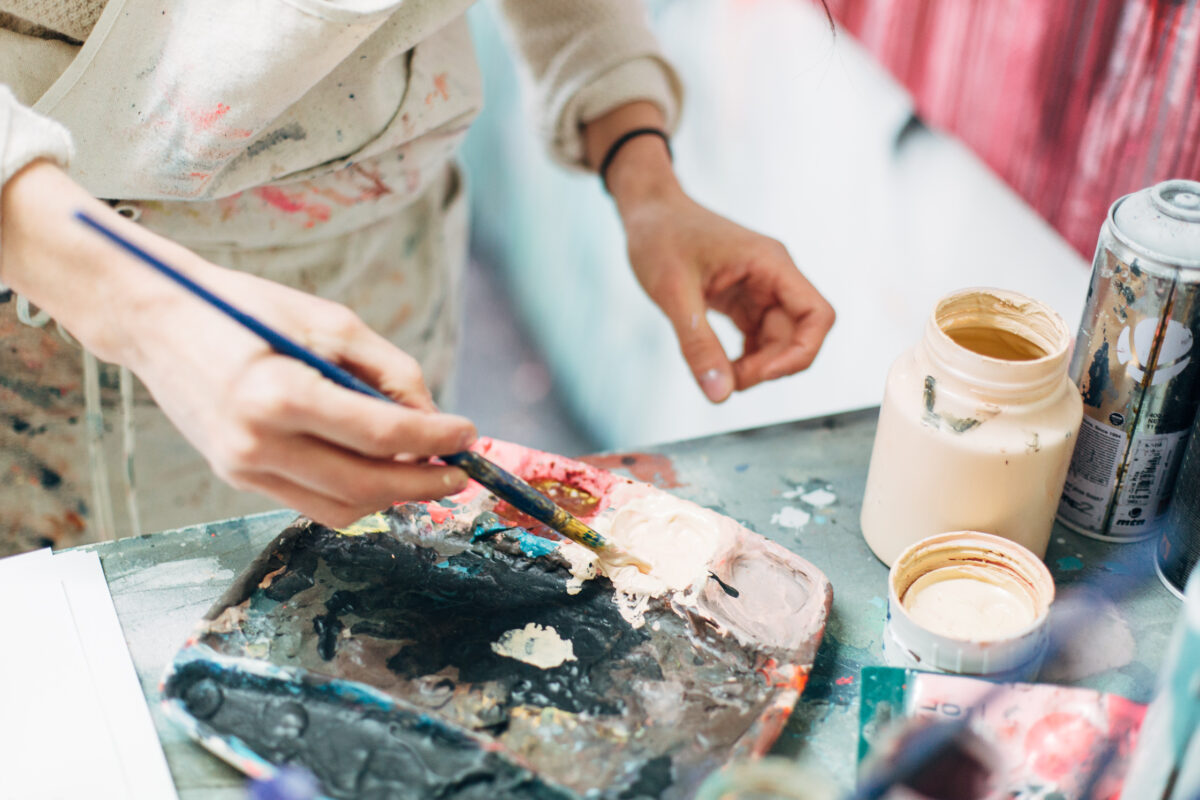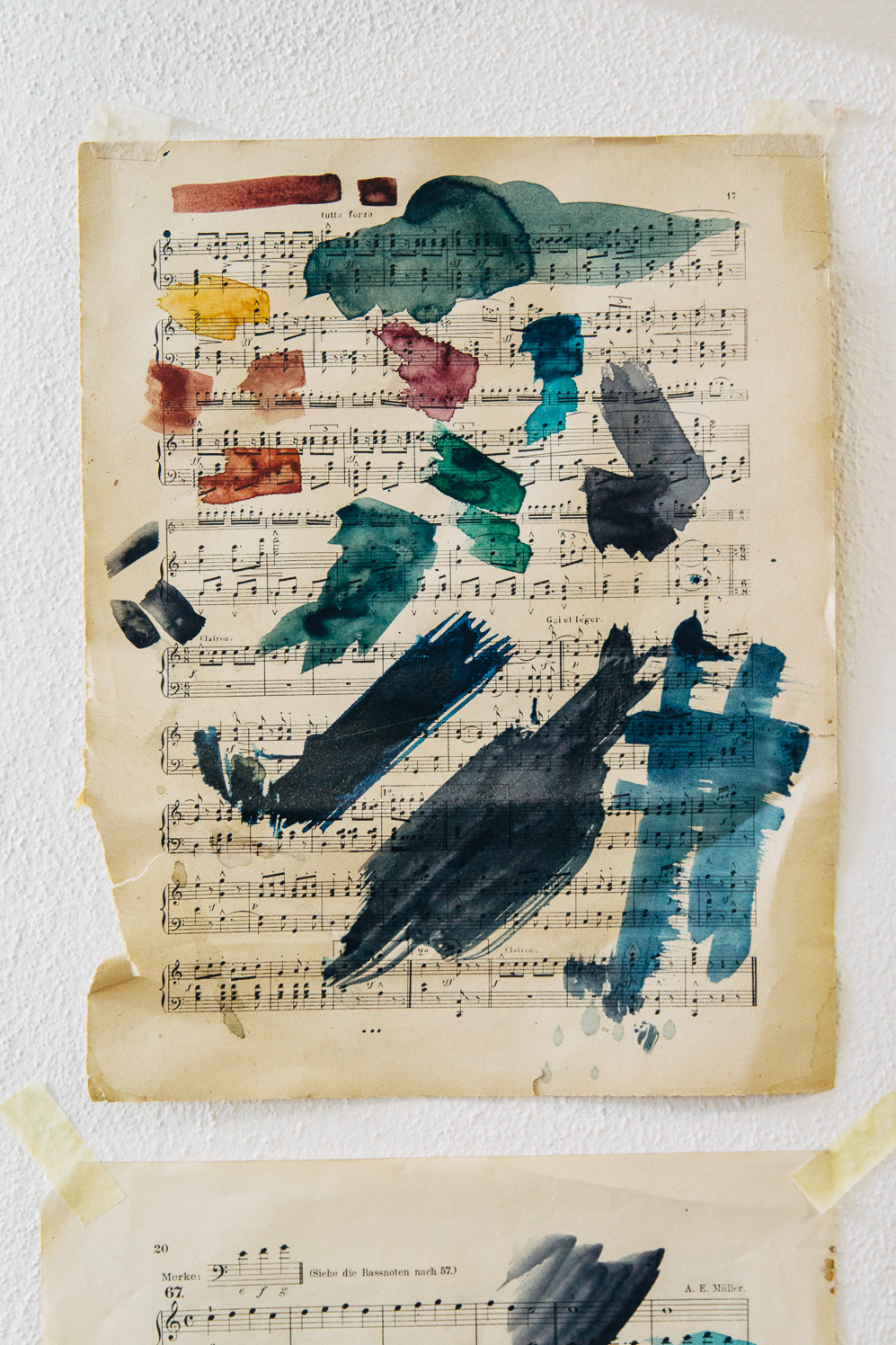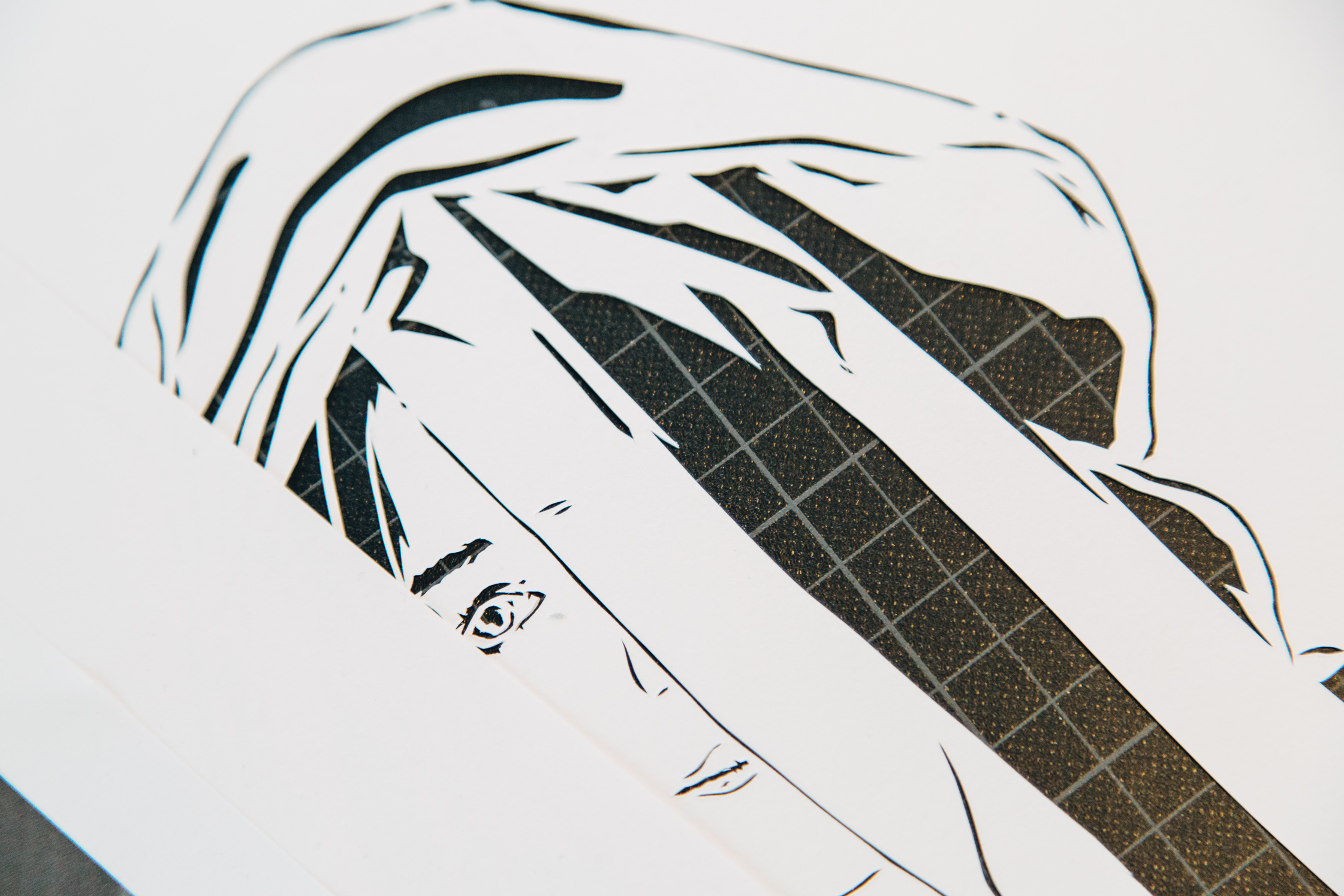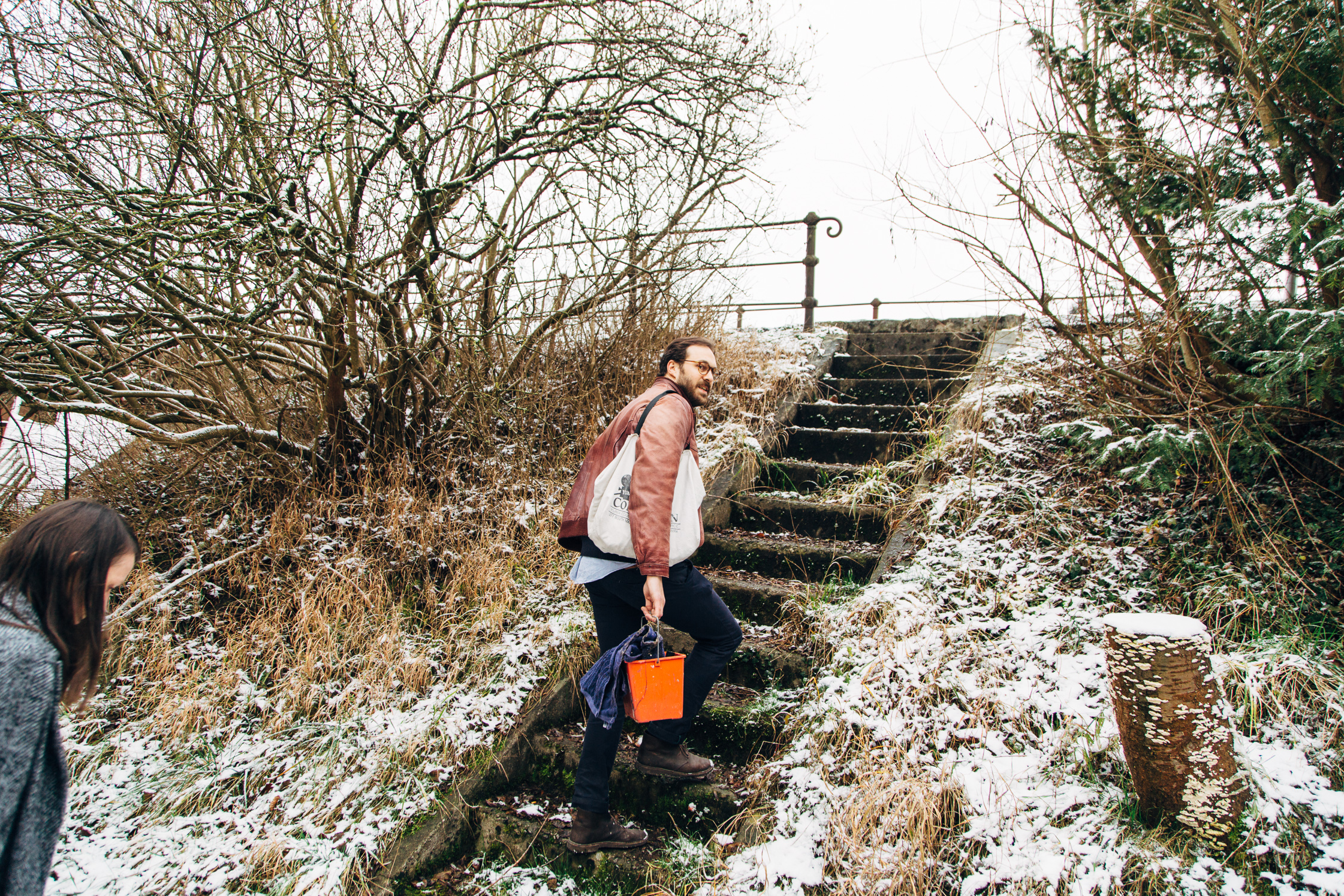These two flat-mates are a perfect pair. As well as being the parents of two children, the pair also work together. Jana Balluch and Jean-Sébastien Philippe (JS) are inseparable.
With an idea in their heads and a spray can to hand, this artistic couple have been making their mark on the urban landscapes of the world’s metropolises for years now.
Jana and Jean-Sébastien met in Madrid during a year abroad; the art came along after that. Inspired by Madrid’s Street Art scene, the Parisian-born Jean-Sébastien – who isn’t a natural painter – began to become interested in sketching. Creating templates from photos, he began to conjure up realistic impressions on every wall.



In Jana’s Austrian homeland, the couple wander around their favorite abandoned buildings and wildernesses. Whether a factory wall or a tree trunk, they are on a never-ending search for a new setting for their art. Through their images Jana and Jean-Sébastien give neglected places new life.
This is a conversation about the aesthetics of rubble, commercial Street Art and the politics of the street.
-
How did you meet?
JS: I was born in Paris and studied economics Tours. For my semester abroad, I went to Madrid where I met Jana.
Jana: I came to Madrid as an au pair but I quit the job early, so I had to find a new apartment and a new job. Jean-Sébastien already lived in the apartment that I moved into.
-
How do two flat-mates in Madrid become two young artist-parents in Salzburg?
Jana: After our time in Madrid, I returned to Vienna and Jean-Sébastien to Paris. Just a year later, I moved to Paris so that we could be together. And then we moved to Salzburg in 2008, because I wanted to study there.
-
When did you begin to work together?
Jana: I already was sketching and photographing all the time. Jean-Sébastien really wasn’t. But, weirdly, it was him who first demonstrated the stencil technique to me.
JS: I learnt the technique in France, from the artist Artiste-Ouvrier. I had already wanted to work creatively for a long time, but I was always unlucky with my pieces. The stencil technique was perfect for me, it’s not an issue whether you can sketch or not, so long as your idea is a good one. In Madrid, I had seen this stenciled style in the Street Art all over the city; a lot of the images were done spontaneously, often with a political message.
Jana: We began with this spraying technique together. But it was only when we moved to Salzburg that we began to earn a living through it.
JS: I was certain that when Jana went to Salzburg I would come with her, although I didn’t know a word of German. Because of this, I could no longer work as an auditor, but I didn’t want to continue with it anyway. We decided, instead, to try and make something of our art.



-
Did that work automatically?
Jana: We had already done a lot of work in Paris, organizing exhibitions in bars and through this we found the support of an agent. Also, in Austria we were asked to do many different projects. What started slow then took off in earnest.
JS: At the beginning, the only thing I found exciting about this type of art was the way it was quickly completed overnight and then you can see it the next day. I had never thought that I would one day earn money from it, let alone make a career out of it.
-
Although Street Art grew out of a subculture and always will maintain an aura of illegality, graffiti artists are increasingly achieving commercial success. Do you welcome this change in attitude?
JS: This development is important for Street artists to be accepted as serious artists. There are still many exciting aspects of the scene that are more than just someone scribbling their name. This perception has been really transformed and it is very different now than 20 years ago.
Jana: For us, it is most important that something beautiful is created. Also, we can no longer work the way we could before when it had to all be done so fast and the only intention was for your art to be noticed on the street. I think therefore that this new perception of Street Art is a good thing.
JS: For me, the spontaneous nature of this art form is still very important. I want spray-painting to remain free.
-
Remain free from what?
JS: The requirements, for example, which we’re given for some of our projects. We want to select the location for a project ourselves.
Jana: We often get requests to do advertising campaigns. We have worked on advertising campaigns twice but both times we had creative freedom, so it was OK. In general, advertising doesn’t interest us.
JS: I also don’t think very much of graffiti that has similar intentions to advertising, such as self-publicity.



-
The surfaces that you work on are very varied: a ruin here and then a subway train there.
Jana: The places we like the best are ones where you wouldn’t be expecting art.
JS: In Paris, every wall has a piece of Street Art or a poster on it. It no longer offers up any surprises. For us, that made it an exciting challenge. For the sake of variety, we’ve painted on tree trunks as well, we surprised ourselves how well it turned out. Street Art is a means of discovery, in order to react to a public space I ask myself if it makes sense and if it is attractive.
-
What is your reaction to public space in Salzburg?
Jana: We still don’t have such a strong relationship with Salzburg. We have our home here, our studio and our family, but we travel a lot. But, since we have had the children, we’ve also tried to do more in Salzburg.
-
You’re drawn to empty buildings and abandoned ruins. You’re highlight very atypical parts of the city.
JS: Although these places are certainly not typical to a city, they are, however, very beautiful. For me, this interest in these atypical places had already been sparked in Paris. Every day, on my way to work, I would always walk past a house that would be torn down. This process really fascinated me; the broken concrete and the void that arises from it. I took a lot of photos at that time.





-
Do you also see your work as a way of valuing abandoned spaces?
JS: I’m not sure whether you can say that we make it prettier, because everybody has a different taste. We take a building that others think is only a ruin and give it a new purpose. We believe that new life is waiting in all these nooks and crannies. We want to demonstrate that these buildings are not ugly; they are, in fact, beautiful.
-
Is there a political message in your work, like that of Banksy?
JS: Our political message does not appear in our work right from the outset. Banksy and many other artists do that, and they do it well.
Jana: I personally would prefer not to have my political beliefs declared across public spaces.
JS: But, anyway, some political and social ideas will be inherent in every piece of Street Art. For example, we don’t find all aspects of these abandoned buildings beautiful. But we also find it stupid that the State allows so many places to stand empty instead of repurposing them. So many people are without a home and so many artists are without studio space. Maybe there should be a cultural space here and a theatre space there. Also, in our paintings, we often build in elements from prefab buildings and similar façades. I think a lot about the style of Banlieus (Outskirts) in France. Our art isn’t as overtly political as the likes of Banksy but it still requires reflection.




-
That’s true, you often work with elements of the façades on the front of houses. Which of your ideas are connected to this?
JS: These façades and architectural structures are symbolic for the city. Initially, we have always been concerned with the people and the spaces in a city. That is to say, we have always done portraits with a façade behind them. In a way, representation of the city is the city itself. We find the contrast between human faces and geometric architecture fascinating.
Jana: Now we concentrate more on the emotions in a city. For the most part, they’re mournful or melancholic emotions.
JS: The emotions of the people are inspired by the places where we spray. That is why you dont see someone laughing on the wall of an abandoned factory. Its a place that offers way deeper stories.
-
The image that you’ve just done is very different: The two people both have a cloth over their heads. What was your intention here?
Jana: It’s difficult to express people’s internal emotions when their faces are too visible. People often want to know who we’re portraying. We want to point out that the identity of the person shouldn’t play a role. People shouldn’t be fixated upon the person’s identity, that’s what we intended here.
JS: Two years ago, we started our projects from the precedent: “It doesn’t matter who we are.” And Surrealism inspired us as well. We love Magritte’s “Les Amoureux”. For me, now that we have a family with two children, the cloth can also represent a kind of protection through concealment.





-
That said, how do you manage your private life, do you find certain personal features being exhibited in your work?
Jana: Our art has a lot to do with what we’re experiencing in our private lives. For example, when I was first pregnant, our work was concerned a lot with childhood. So we did many pieces with children.
JS: We are both life and work partners, this makes it difficult to draw the line between the two. Our art is our life and our life is our art. This has been apparent especially the last few times we were on the road. Now we exist as a foursome, so if we are working in an abandoned building then we take our children with us.
-
Do your children like the work, even if most of your images are quite sad?
Jana: I’m really not sure whether the children find our pictures sad at all. It’s often children who are the ones to stop and admire our work; maybe they have a very different perception of it.
-
Has your work ever been criticized?
Jana: Not that I know of. Although now and then people want you to depict smiling faces. But that’s not what we do.
JS: Yeah, but many also don’t want to see faces that they don’t recognize. And we were also criticized a little about the cloth.




-
Will your art ever be removed?
Jana: The works in France have already eroded away. Or people paint over them when they’re no longer attractive. One time, a piece was painted over the very next day, because we were not allowed to work there. But that sort of thing happens very rarely. Also, we never spray on new builds. In Paris we felt safest because you can’t really get into too much trouble. The French are relatively chilled about it.
JS: The biggest problem I had was in Berlin. Graffiti is everywhere there so I thought that it wouldn’t be an issue. But that wasn’t the case. You can no longer do graffiti easily there. (laughs)
Jana: We travel a lot and can we can hardly visit anywhere without looking for some space to work. It’s all for the better that, years after creating our own pieces, we come back and see how they’ve transformed. But it’s also good when they’re painted over. Other artists should put the space to use as well. The city is always in a process of transformation. It is beautiful when a picture changes with it.
Have a look at Jana & Jean-Sébastien work and projects.
Photography:Jacob Pritchard
Interview:Leonie Haenchen
English Editor: Aggi Cantrill

